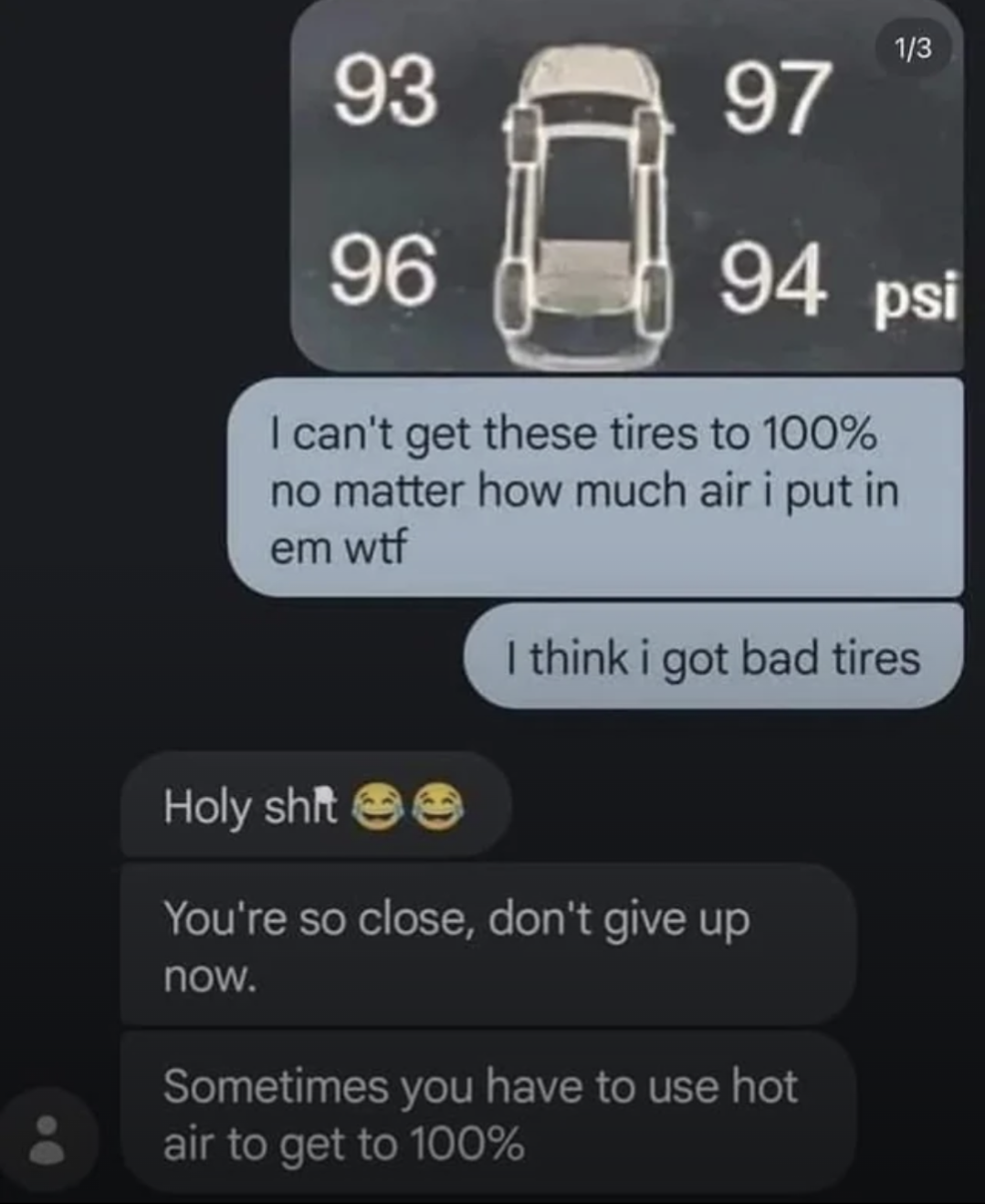this post was submitted on 20 Sep 2024
705 points (97.2% liked)
Funny: Home of the Haha
5742 readers
789 users here now
Welcome to /c/funny, a place for all your humorous and amusing content.
Looking for mods! Send an application to Stamets!
Our Rules:
-
Keep it civil. We're all people here. Be respectful to one another.
-
No sexism, racism, homophobia, transphobia or any other flavor of bigotry. I should not need to explain this one.
-
Try not to repost anything posted within the past month. Beyond that, go for it. Not everyone is on every site all the time.
Other Communities:
-
/c/TenForward@lemmy.world - Star Trek chat, memes and shitposts
-
/c/Memes@lemmy.world - General memes
founded 1 year ago
MODERATORS
you are viewing a single comment's thread
view the rest of the comments
view the rest of the comments

GCN has a number of videos on this subject: https://youtu.be/jTZfrBVr5pQ?si=M5v6KP5ZZ9ZU5MXz
https://youtu.be/AK5KLvrzrb4?si=aMcYxYnWi9poZ8SA
And here is some technical data from SRAM: https://www.sram.com/globalassets/publicsites/cms-campaign-pages-not-story-pages/zipp/totalsystemeffeciency/pdf-downloads/tse-explained2.pdf
Basically new data includes vibration losses which get larger as pressure increases. There’s a sweet spot to balance between rolling resistance (which decreases with pressure) and vibration (which increases with pressure). So when you mention ride comfort as a trade off, it actually has a much larger effect than you might imagine.
Thanks for the videos and the PDF, but they are all bicycle related.
A car has a whole sophisticated subsystem dedicated for absorbing vibrations (the suspension), so I'm not sure the results can be applied there...
Oh I was only addressing this:
Fair enough
Suspension is great for smoothing out low frequency unevenness, but not so much for high frequencies, like something the size of gravel- a spring will ring like a bell.
That's why a suspension is much more than a spring.